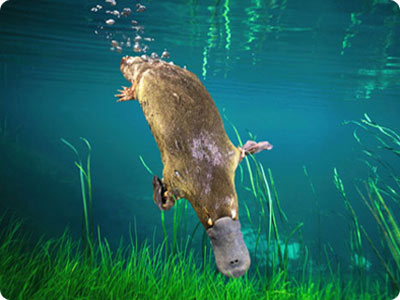Types of Egg Laying Mammals
There are two families of mammals which lay soft-shelled eggs: the echidnas and the platypus. The development within the egg is very brief, and in all other aspects, the monotremes as they are called, resemble other mammals.
The echidna is also known as the spiny anteater because it has a spiny coat, which protects it from predators. When alarmed the echidna curls up into a ball or, if it is one soft soil, it will dig rapidly down so that in seconds, only its spines are visible.
The female echidna has a pouch, into which she lays her single egg. The egg hatches after 10 days and the young will remain in the pouch until its spines begin growing. As in other mammals, the young feeds on its mother’s milk. Milk is produced by milk patches as echidnas have no teats. They young sucks the milk as it trickles through its mother’s fur. When not breeding echidnas live alone. The feed mainly on ants and termites and shelter in hollow logs or under thick vegetation. Breeding females dig a short burrow.

Echidna Picture
When a platypus skin arrived in Britain in 1798 everyone thought it was a hoax. It took nearly 200 years before this strange little animal was accepted as a proper mammal. Not only does the platypus lay eggs, but it is also poisonous. Male platypuses have a horny spur behind the rear ankle which can be used, by way of a sharp kick, to deliver an injection of poison to an attacker. Enough poison is released to kill a dog. The platypus lays two eggs in a special breeding burrow. When the young hatch she will feed them with milk. Platypuses are found close to water as they feed almost entirely on small water creatures, in particular insect larvae.

Platypus Picture


